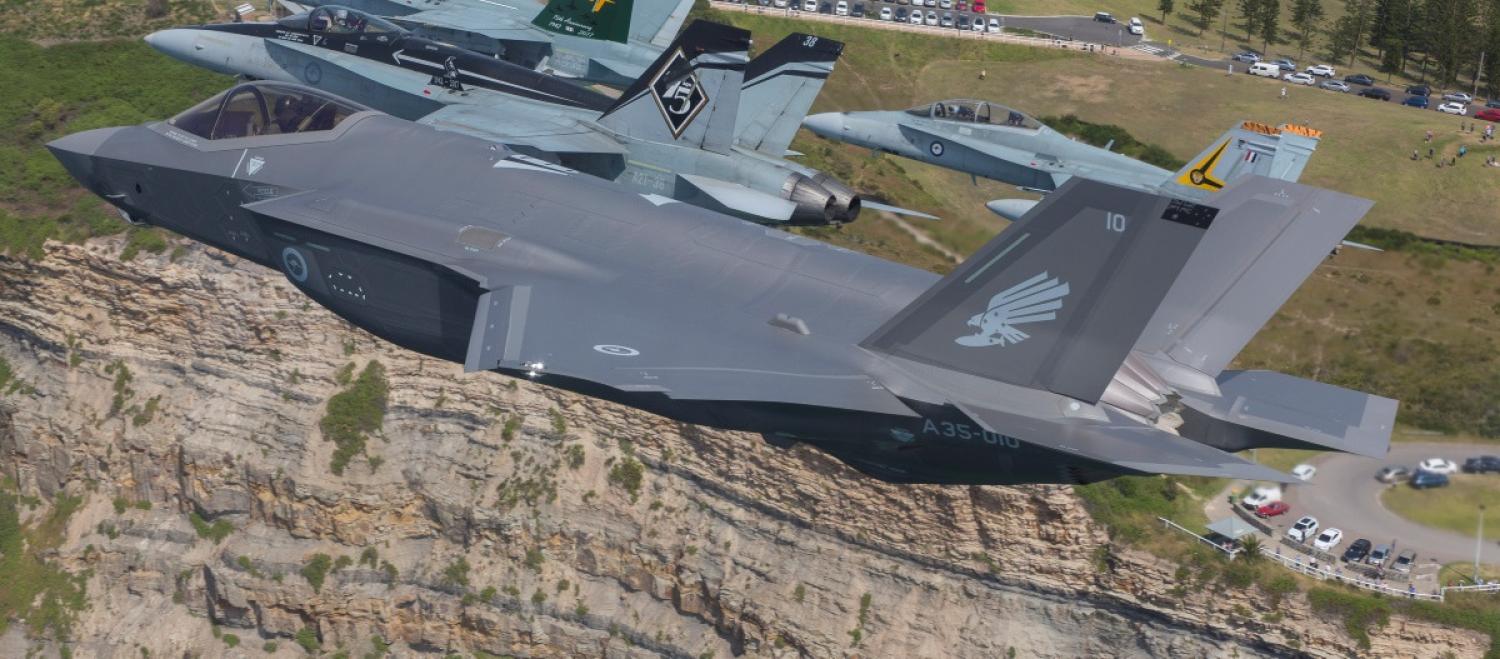The Royal Australian Air Force announced last week that it has commenced flight operations with the first two of its new F-35A Joint Strike Fighters.
When the first full squadron of F-35s is operational in 2020, the Air Force will have made a substantial capability leap, particularly in “data fusion” capability that will give not just F-35 pilots but the entire ADF an improved command of its operating environment. The F-35 also comes with superior ability to evade enemy air defences.
But for some analysts, it is not enough. My old Defence Department colleague Marcus Hellyer, now with the think-tank ASPI, argues on The Strategist that the range of the F-35, and specifically the “A” variant Australia is getting, is insufficient to give Australia a sustained presence more than 1000 nautical miles away from home bases. The answer might be to buy an additional squadron of the F-35B, he says, a jump-jet variant that can operate from amphibious ships such as HMAS Canberra and HMAS Adelaide. Hellyer also suggests buying a third ship from which to base this squadron.
My concern with these scenarios is that the tail is wagging the dog.
What would such a capability be used for? For one thing, our amphibious ships are vulnerable if they sail beyond the range of our land-based fighters – we cannot send 1000 soldiers into harm’s way on vulnerable ships. Second, if these troops make it to shore, they will need support to hit enemy targets at a longer range than the land force can itself achieve. Third, Australia doesn't have the ability to strike enemy land targets at long range with a good chance of surviving the mission (to put it another way, the RAAF doesn't have a true successor to the F-111). Fourth, we need to be able to hit enemy ships at longer range than we can currently achieve with our subs and surface ships. And fifth, we need an improved ability to protect our own ships, because a new generation of Chinese and Russian anti-ship missiles can be launched from outside the range of the defensive systems these ships carry.
My concern with these scenarios is that the tail is wagging the dog.
For instance if, as Marcus acknowledges, it is becoming increasingly dangerous to undertake large-scale amphibious operations against adversaries with even modest anti-ship capabilities, then maybe instead of spending money to marginally decrease that danger, we should think about ruling out contested amphibious operations altogether. What pressing national-security concern is actually met by such a capability, anyway? Marcus talks generally about “going up against the Chinese fleet in the South China Sea”, but even if that were to happen, in what plausible future would such a clash involve an amphibious landing by the ADF?
What about a lower-intensity scenario? “A dozen F-35Bs...would provide a lot of close air support in an insurgency situation like that which unfolded in the Philippine city of Marawi”, Marcus suggests. But again, why is this an urgent capability requirement? Australia has many other options for such circumstances, and in fact, we helped the Filipino government in Marawi with airborne intelligence support.
It seems the main justification for Australia to extend its F-35 capability further outward is to support an amphibious warfare capability which we don't really need, and which would be too dangerous to use against even a moderately competent adversary.
Marcus does raise one intriguing suggestion that I had previously not considered. His additional amphibious ship could, he argues, do double duty: it could be a part-time aircraft carrier for the F-35B but also serve as a mobile base for a large force of anti-submarine helicopters. You should already have guessed that I am opposed to the first part of that idea, but instead of buying additional amphibious ships for anti-submarine warfare, maybe we should think about converting one we already have. Take a look at the appendix to this ASPI report to get a sense of how useful a large force of helicopters could be to detect and attack enemy submarines.
At the heart of debates such as this one is a difference over how Australia should deter a potential adversary – should it be by threat of punishment (we can hurt you) or threat of denial (you can't hurt us)? I tend to favour the latter approach, and the land-based F-35 can play an important part in a force which meets that requirement. Any more would be an indulgence, not to mention that it would be badly received by our neighbours.

